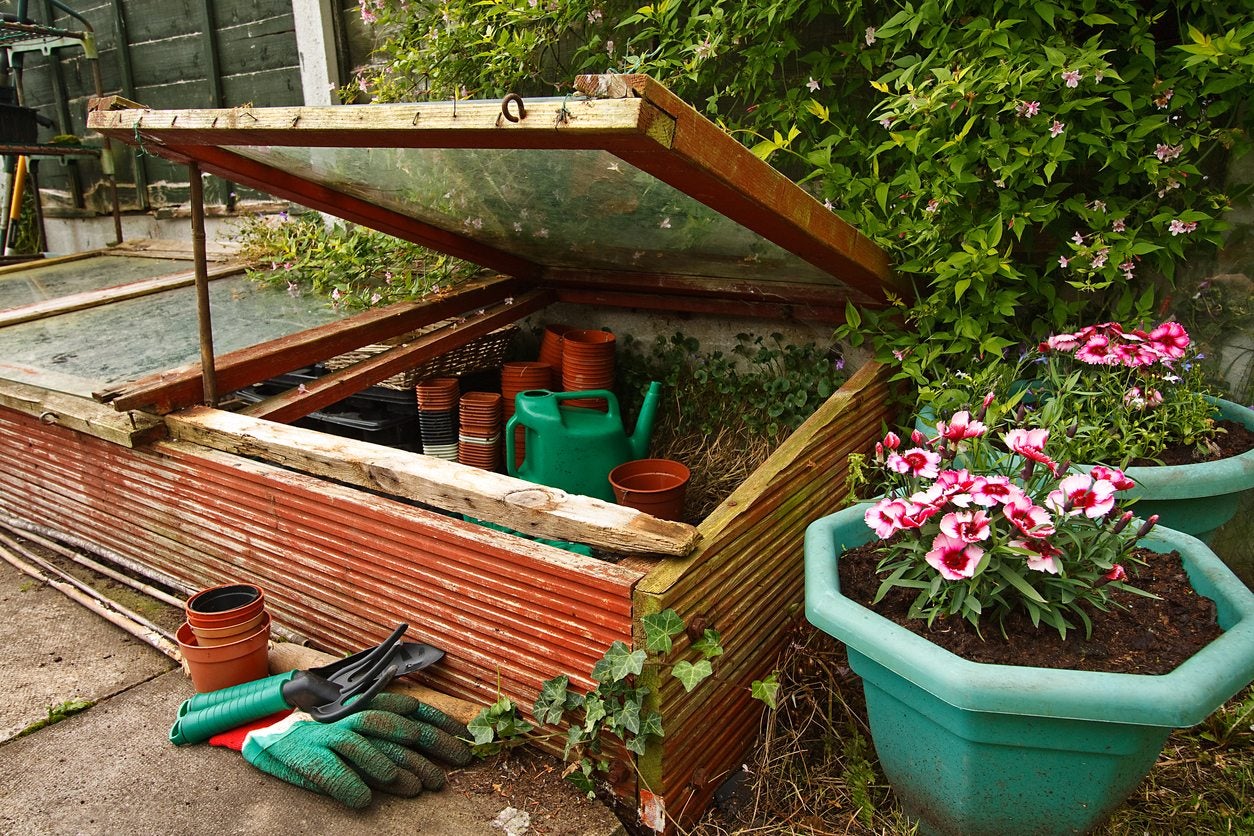Using Cold Frames In The Garden: Learn How To Use A Cold Frame

Greenhouses are fantastic but can be quite pricey. The solution: a cold frame (often called the “poor man’s greenhouse”). Gardening with cold frames is nothing new; they’ve been around for generations. There are a number of uses for and reasons for using cold frames. Keep reading to find out how to use a cold frame.
Uses for Cold Frames
There are a number of ways to build a cold frame. They may be made out of plywood, concrete, or hay bales and covered with old windows, Plexiglas, or plastic sheeting. Whatever materials you choose, all cold frames are simple structures used to capture solar energy and create an insulated microclimate. Gardening with cold frames allows the gardener to lengthen the garden season, harden off seedlings, start seedlings earlier, and overwinter tender, dormant plants.
How to Grow Plants in a Cold Frame
If you are using cold frames to extend your growing season, the following plants grow well in a cold frame environment:
If you are using cold frames to protect tender plants from winter temps, cut the plants back as much as possible before the first fall frost. If it isn’t already in a pot, put it in a large plastic container and fill it with soil. Pack the cold frame with pots. Fill in any large air gaps between pots with leaves or mulch. Water the plants. Thereafter, you will need to monitor the conditions inside the cold frame. Keep the soil damp but not wet. Cover the frame with a white plastic cover or the like to keep out most of the light. Too much light will encourage active growth and it isn’t the right season for that yet. The white plastic will also keep the sun from heating the cold frame too much. Seedlings can be transferred to the cold frame or started directly in the cold frame. If sowing directly into the cold frame, have it in place two weeks before seeding to warm the soil. If you start them inside and transfer them to the frame, you can start those six weeks earlier than normal. Keep an eye on the amount of sun, moisture, temps, and wind within the frame. Seedlings benefit from warmer temps and moisture, but winds, heavy rain, or too much heat can kill them. That said, how do you properly use a cold frame to grow plants and germinate seeds?
How to Use a Cold Frame
Growing plants in a cold frame requires the constant monitoring of temperature, moisture, and ventilation. Most seeds germinate in soil that is around 70 degrees F. (21 C.). Some crops like it a little warmer or cooler, but 70 is a good compromise. Soil temps are not the only concern. Air temperature is also important, which is where the gardener needs to carefully monitor.
- Cool-season crops prefer temps around 65 to 70 degrees F. (18-21 C.) during the day and 55 to 60 degrees F. (13-16 C.) degrees at night.
- Warm season crops like temps 65 to 75 degrees F. (18-23 C.) during the day and not lower than 60 degrees F. (16 C.) at night.
Careful monitoring and response are important. If the frame is too warm, vent it. If the cold frame is too cold, cover the glass with straw or another padding to conserve heat. To vent the cold frame, raise the sash on the opposite side from which the wind is blowing to protect tender, young plants. Open the sash completely or remove it on warm, sunny days. Close the sash in the late afternoon once the danger of excess heat has passed and before the evening air turns chilly. Water plants early in the day so the foliage has time to dry before the frame is closed. Only water the plants when they are dry. For transplanted or direct sown plants, very little water is necessary since the cold frame retains moisture and temperatures are still cool. As temps increase and the frame is open longer, introduce more water. Allow the soil surface to dry between watering but not until the plants wilt.
Gardening tips, videos, info and more delivered right to your inbox!
Sign up for the Gardening Know How newsletter today and receive a free copy of our e-book "How to Grow Delicious Tomatoes".

Amy Grant has been gardening for 30 years and writing for 15. A professional chef and caterer, Amy's area of expertise is culinary gardening.
-
 Get Ready For A Summer Of Hummers! Grow These Full Sun Hummingbird Plants and Flowers
Get Ready For A Summer Of Hummers! Grow These Full Sun Hummingbird Plants and FlowersIf you’re lucky enough to enjoy a sunny backyard, make sure you are maxing out on your pollinator opportunities and grow these full sun hummingbird plants and flowers
By Tonya Barnett
-
 12 Lush Alternatives To A Lawn For Sustainable Spaces
12 Lush Alternatives To A Lawn For Sustainable SpacesAlternatives to a lawn are beautiful and also beneficial to your local ecosystem and its pollinators. Explore our top picks for plants to replace grass.
By Tonya Barnett